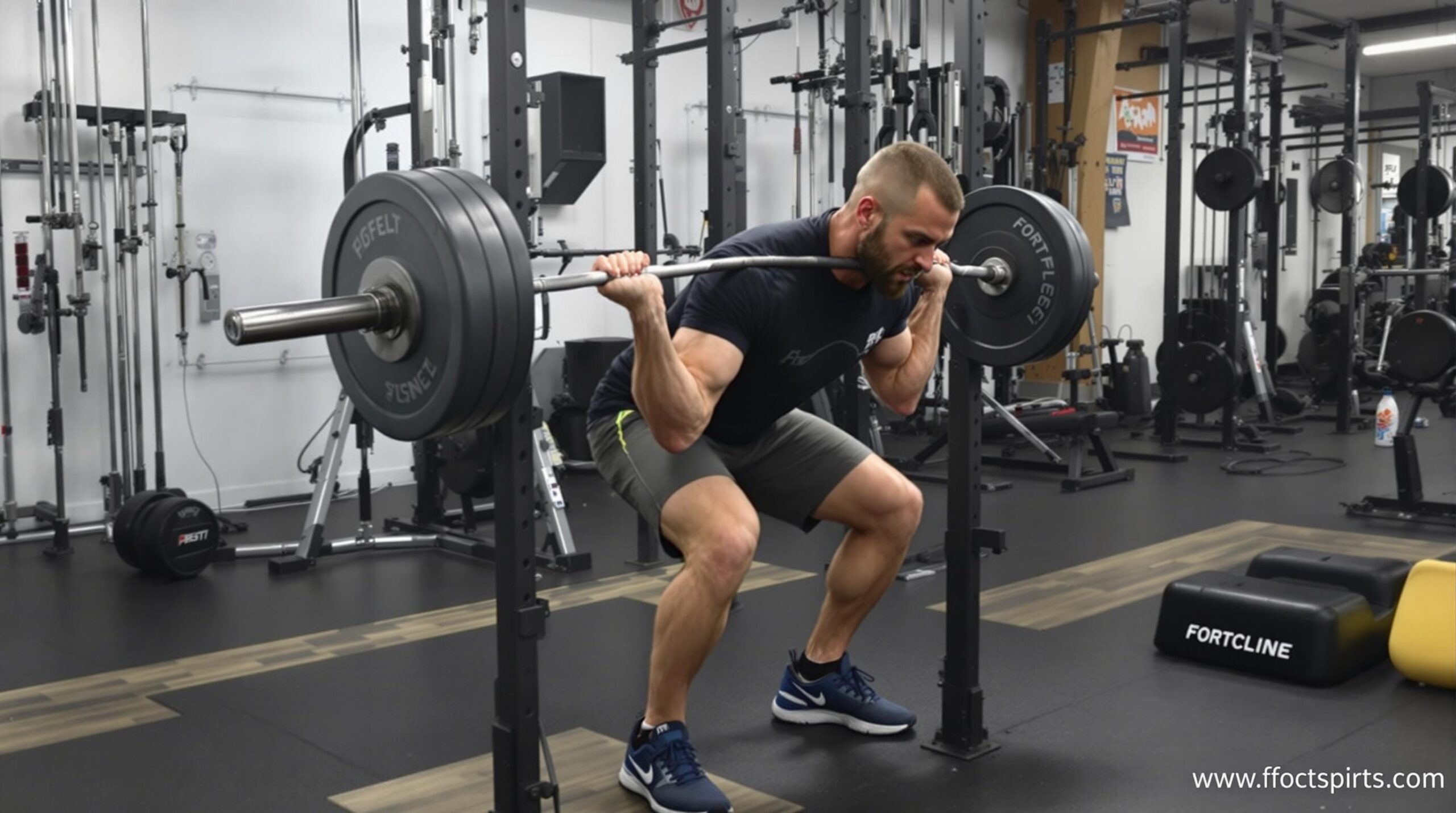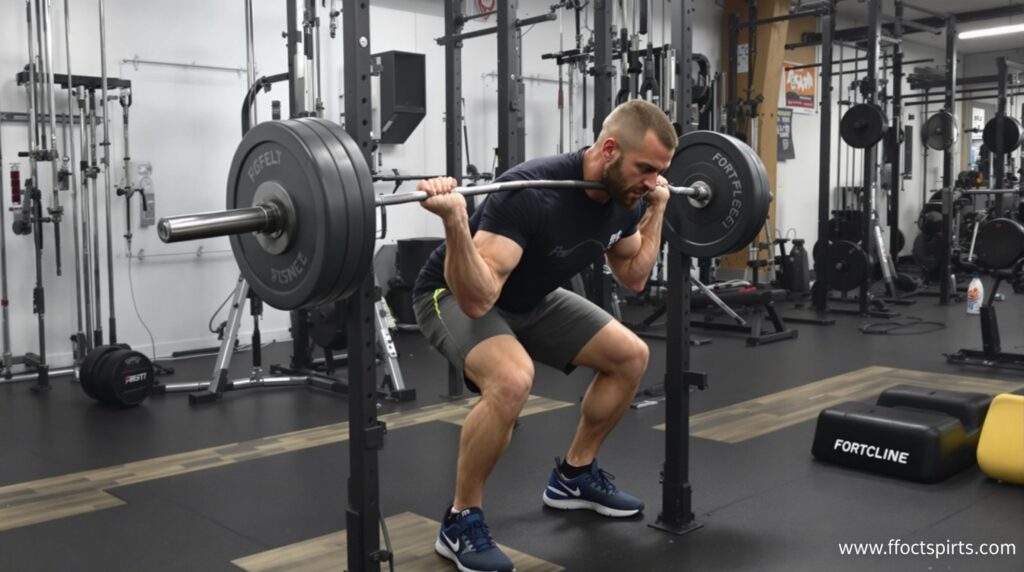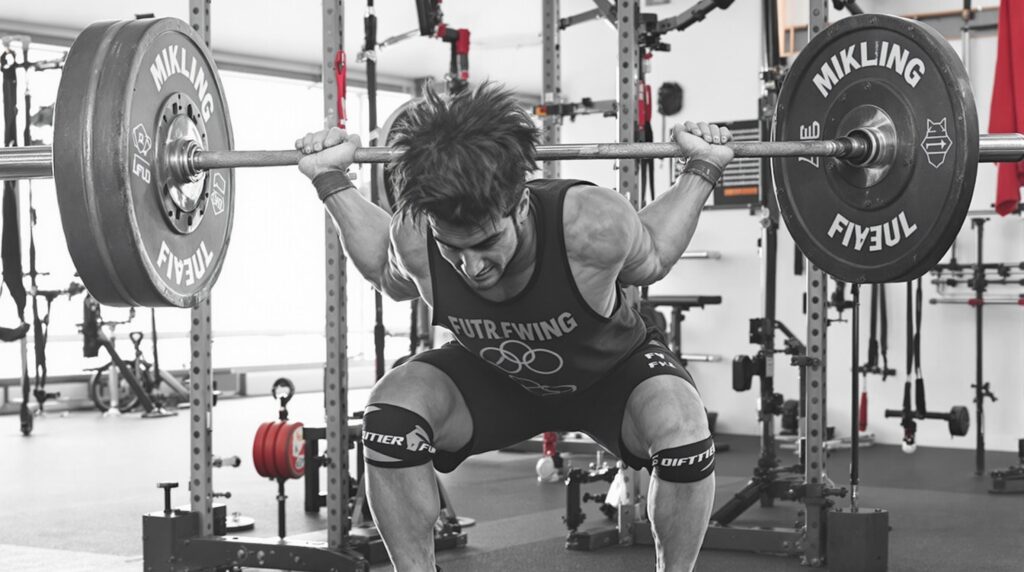Core training powerlifting is often misunderstood as merely a supplement to the primary lifts, but research shows it can directly increase power output by up to 25% when properly developed. Effective core stability not only prevents injuries but also creates the rigid foundation necessary for transferring force between upper and lower body during competitive lifts.
Key Takeaways
- Your core muscles extend beyond just abs to include transversus abdominis and hip stabilizers critical for powerlifting
- Research demonstrates a 20-25% improvement in power output with proper core development
- Anti-extension and anti-rotation exercises provide more functional strength than traditional crunches
- Proper bracing technique increases intra-abdominal pressure essential for handling maximal loads
- Progressive overload applies to core training just as it does to main lift progressions
The Critical Role of Core Strength in Powerlifting
When discussing core training powerlifting athletes need to understand that the core acts as the essential link between upper and lower body strength. The core isn’t simply your “six-pack” muscles but encompasses a complex system including the transversus abdominis, internal and external obliques, multifidus, and erector spinae muscle groups. These muscles work together to create stability during heavy compound movements.
Research has consistently shown that a well-developed core can improve power output by 20-25% across all major lifts. This happens through improved force transfer efficiency from the ground up through your body. The ability to generate and maintain intra-abdominal pressure through proper bracing technique directly impacts performance on the platform.
Most powerlifters focus exclusively on the big three lifts but neglect dedicated core work. This oversight can lead to energy leaks in your kinetic chain, reducing efficiency and increasing injury risk. The exercises that follow target different aspects of core function specifically relevant to competitive lifting demands.

Ab Wheel Rollout: The Ultimate Anti-Extension Challenge
The ab wheel rollout stands out as one of the most effective anti-extension exercises for powerlifters. According to EMG data from a Brazilian study, the rectus abdominis shows 81% Maximum Voluntary Isometric Contraction (MVIC) at 150 degrees of extension during rollouts. Additionally, pectoralis major activation increases to 57% MVIC during full extension, making this a compound movement for the entire anterior chain.
What makes this exercise particularly valuable for powerlifters is how it creates less spinal compression than traditional flexion exercises like crunches. This allows you to train your anti-extension strength without compromising recovery between heavy training sessions. The ability to resist extension under load directly transfers to maintaining a neutral spine during deadlifts and squats.
Start with kneeling rollouts if you’re new to this exercise. As strength improves, progress to standing variations and eventually decline rollouts for advanced trainees. Each progression increases the demand on your anterior core by approximately 15-20%, according to research on progressive core training protocols.
Weighted Plank Variations for Powerlifting Stability
Planks might seem basic, but weighted variations create significant core activation patterns that directly transfer to the competitive powerlifting platform. The prone plank on a stability ball with hip extension activates the gluteus maximus, hamstrings, and both external and internal obliques at greater than 61% MVIC according to electromyography studies.
Adding external load to planks increases rectus abdominis activation by 35-45% compared to bodyweight variations. This makes weighted planks particularly valuable for developing isometric strength needed for bracing during maximal lifts. The research from the Journal of Physical Therapy Rehabilitation Science confirms that instability devices increase EMG activity across all core muscles by 18-27%.
Technique matters significantly with planks. Forearm planks create different activation patterns than straight-arm variations, with the former emphasizing deeper stabilizers and the latter increasing serratus anterior engagement. Both have value in a comprehensive powerlifting core program. Progress by increasing hold time before adding weight to ensure proper form is maintained.
Palloff Press: Mastering Anti-Rotation for Stronger Lifts
The Palloff press addresses a critical but often overlooked aspect of powerlifting: rotational stability. Comparative data shows that while rotational exercises engage internal and external obliques at 26-42% MVIC, anti-rotational exercises like the Palloff press train these muscles to resist unwanted movement — crucial for maintaining position under heavy loads.
This exercise serves as transverse plane stability training that directly transfers to handling uneven loading that can occur during competitive lifts. Progressive resistance protocols show a 17% improvement in rotational strength after 8 weeks of consistent training, according to studies on core training adaptations.
Perform Palloff presses in standing, half-kneeling, or tall-kneeling positions to target different aspects of stability. The half-kneeling position particularly challenges hip stability while removing assistance from the legs, making it especially valuable for powerlifters working to improve bracing mechanics under asymmetrical loads that occur during competition.
Farmer’s Walk: The Overlooked Core Stabilizer
Farmer’s walks create remarkable core activation levels, reaching 35-42% MVIC during the stance phase of carrying. Research shows peak activation in the abdominals and rectus femoris during unilateral loading, making this one of the most functional core exercises available for powerlifters. The strength gained transfers directly to maintaining position during heavy squats and deadlifts.
Studies published in the National Strength and Conditioning Association journal demonstrate that heavy carries (>70% 1RM) improve oblique endurance by 22% after just 6 weeks of consistent training. More importantly, this improvement correlates with a 15% enhancement in squat stability, making this exercise valuable for powerlifters struggling with core stability during their competitive lifts.
The farmer’s walk challenges anti-lateral flexion strength, forcing your body to resist bending sideways under load. This directly improves bracing during asymmetrical loading patterns that often occur in competition, particularly during the squat when slight imbalances between sides can compromise lift efficiency.
Deadbug Variations: Controlling Pelvic Position Under Load
The deadbug exercise may look simple but offers remarkable core activation when performed correctly. Research from St. Mary’s University shows that the plyometric deadbug increases rectus abdominis (53% MVIC), external obliques (26% MVIC), and internal obliques (42% MVIC) compared to the traditional slow deadbug (just 6% MVIC). This dramatic difference highlights the importance of exercise selection and execution.
The kettlebell pullover variation increases thoracic stability demands by 28% according to EMG studies. This directly benefits powerlifters who need to maintain rigid upper back positioning during bench press and overhead movements. The exercise teaches proper bracing mechanics that transfer directly to the setup for squats and deadlifts.
Progression strategies include adding resistance through bands or weights and manipulating limb positions to increase leverage disadvantages. Each progression should focus on maintaining perfect pelvic position while increasing demand, ensuring the training effect directly transfers to competition lifts where maintaining neutral spine position under load is crucial for both performance and safety.
Hanging Leg Raise: Building Hip Flexor and Lower Abdominal Strength
The hanging leg raise activates the rectus abdominis at an impressive 130% MVC and external obliques at 88% MVC according to research published in the Journal of Orthopedic & Sports Physical Therapy. This makes it one of the most effective anterior core exercises available to powerlifters. The exercise creates approximately 3000N of spinal compression versus alternatives like the Body Saw at 2500N.
For powerlifters, the hip flexor strength developed through hanging leg raises directly transfers to maintaining tight positions in competition lifts, particularly at the bottom of a squat. The progression pathway moves from knee raises to straight leg variations and eventually to toe-to-bar movements, with each step increasing demand on both the core and hip flexors.
Focus on posterior pelvic tilt throughout the movement to maximize abdominal engagement and minimize excessive lumbar extension. This attention to proper form teaches L-spine control under load, a fundamental skill for maintaining optimal positioning during maximal attempts in all three powerlifting movements.
Copenhagen Plank: The Secret to Adductor Strength for Squats
The Copenhagen plank targets a frequently overlooked component of powerlifting core training: the adductors. Research in the Journal of Strength and Conditioning Research shows adductor magnus activation exceeding 60% MVIC during this exercise. These muscles contribute 15-20% to medial stabilization during squats, making them crucial for maintaining optimal knee tracking under heavy loads.
Progressive variations from supported to full extension increase difficulty by approximately 35%, allowing for systematic overload similar to your main lifts. This exercise becomes particularly valuable for powerlifters who struggle with knee valgus during heavy squats, as it directly strengthens the muscles responsible for preventing inward knee collapse.
Include Copenhagen planks 1-2 times weekly, starting with shorter holds (10-15 seconds) in the supported position before progressing to longer durations and more challenging variations. The lateral force resistance developed through this exercise creates stability benefits that transfer directly to maintaining proper squat mechanics under near-maximal loads.
Sources
USA Weightlifting – The Best Core Exercises for Weightlifters
Scielo – Core Muscle EMG Activity During Exercise



